I’ve experimented with making longbows with four different riser layouts. Riser A represents probably the…
Grip size of a longbow
The grip on a longbow is usually smaller and more refined than the grip on a hunting recurve, a target recurve, or even a compound bow. Obviously, the most comfortable grip size is determined by the size of your bow hand and your personal preference for the way the grip feels. Plus, we all know that men, women, and children have different hand sizes. In this post I will describe the best ways to measure a grip and suggest some measurements for small, medium, and large grip sizes.
In a previous post, titled Five common styles of longbow grips, I categorized the most common longbow grip styles and gave some basic measurements for each style. The styles vary a bit, so to keep things simple, in this post I’ll only be talking about the locator style grip. The locator style is the most popular style, the style most common on reflex/deflex longbows, and the style that I usually make the most.
Width, thickness, and circumference
For a locator style grip, I like to quantify grip sizes and dimensions by measuring the width, thickness, and circumference of the grip. The locator point is the narrowest, thinnest and deepest point of the grip, and where the thumb and forefinger grip the handle.
The width and depth are most easily and consistently measured with a caliper.
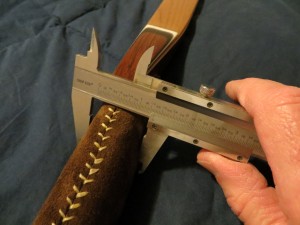
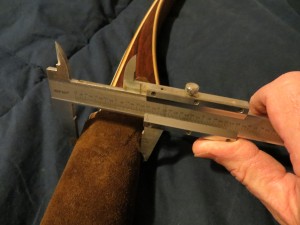
The circumference is the distance completely around the grip. It is most easily measured with a flexible tape measure from your wife’s sewing room (grin), or a retractable tape measure that has a flexible ruler. The retractable tape measures with narrow rulers seem to work better than the wide ones.
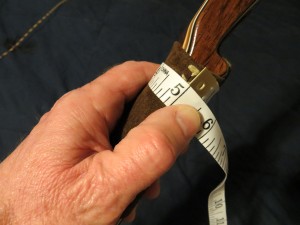
Suggested grip measurements for longbows
Since grip size can vary for different shooters, the measurements listed below are simply a suggestion and probably a good place to start. Also…some archers prefer a narrower, deeper grip, while others prefer a wider, thinner grip, and even others prefer one that is equal in both width and depth.
My HAMMER Hybrid Longbow design has a locator style grip with a low wrist position. On my bows, the grip is just slightly sculpted with a very slight palm swell. This is probably the most popular longbow grip style because it is very comfortable to hold, and it helps your hand settle into the same position for each shot. When your bow hand naturally settles into the same position for each shot, it is much easier to improve your bow shooting accuracy and consistency.
Small: 1-1/16” wide x 1-3/8” thick x 4-1/4” circumference
Medium: 1-1/8” wide x 1-1/2” thick x 4-9/16” circumference
Large (normal): 1-3/16” wide x 1-5/8” thick x 4-7/8” circumference
X-Large: 1-1/4” wide x 1-3/4” thick x 5-3/16” circumference
(All measurements are taken at narrowest/thinnest/deepest point of grip.)
If you plan to install a leather grip cover after the bow is finished, the grip needs to be shaped slightly smaller so it won’t be too large after the leather is put on. To accomplish this, just make the grip about 1/16” to 1/8” smaller in both width and depth depending on the thickness of the leather. The most precise way to get the grip size right is to wrap a scrap piece of leather around the handle when you measure it.
When sculpting a grip, stop and measure the width and thickness frequently in order to get it right. The goal is for the grip to finish up with perfect dimensions just as the finish sanding is completed with 220 grit sand paper and the bow is ready to spray. So, start by cutting it out over sized and work it down with rasps, files, sanders, sand paper, etc. until all of the tool marks are gone and the grip is smooth.
You might also like the post Grip size of a recurve.

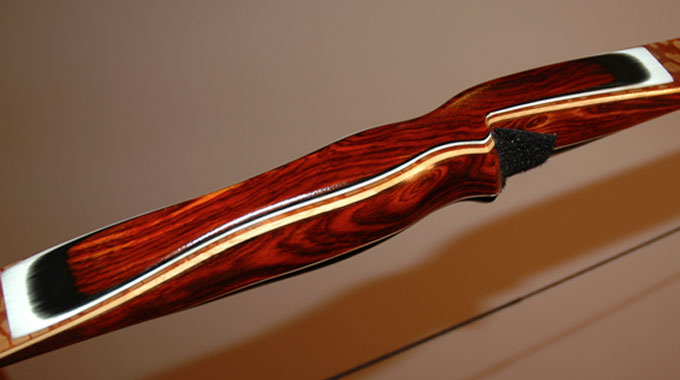
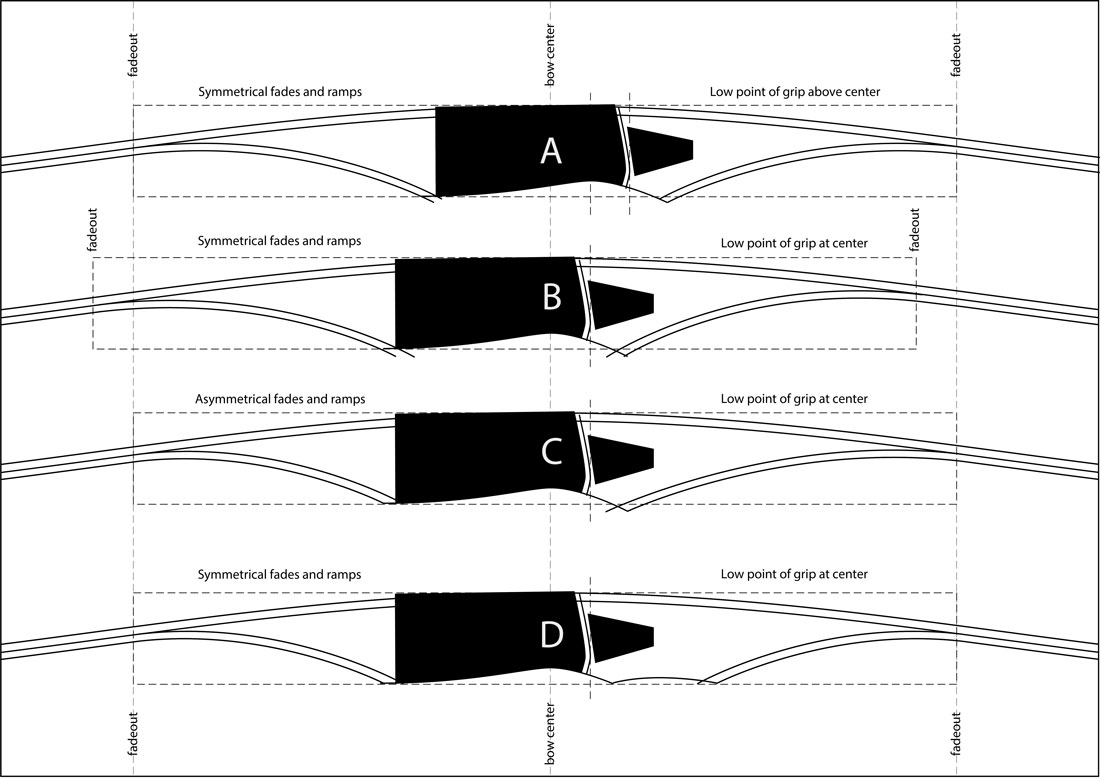
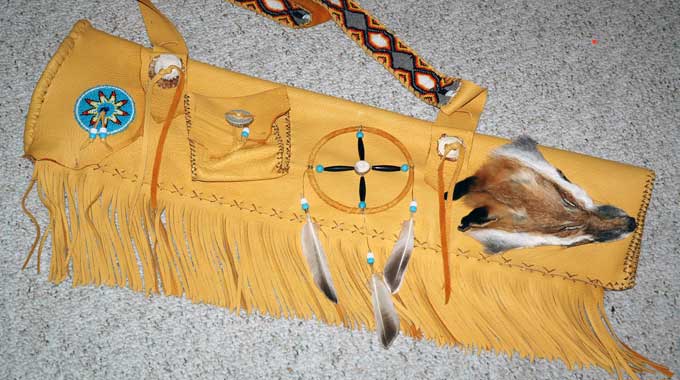

Great work Jim. This is going in my bowbuilding notebook!! Bob Zang